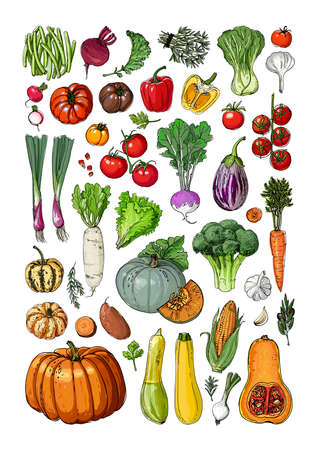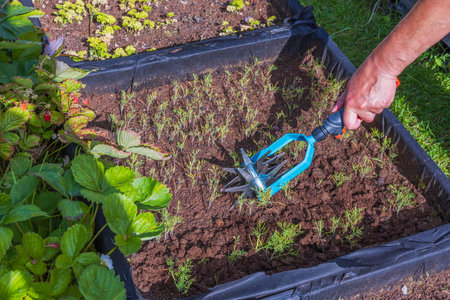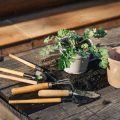1. Planning Your Budget-Friendly Garden
If youre dreaming of fresh, homegrown veggies but don’t want to break the bank, smart planning is your first step. A little prep work goes a long way in saving money and boosting your harvest.
Choose the Right Location
Before you buy seeds or soil, take a good look at your yard or balcony. Vegetables need at least 6–8 hours of direct sunlight daily. Look for a spot that:
- Gets plenty of sun
- Has good drainage
- Is close to a water source
- Is protected from strong winds
Assess Your Space
Whether you have a big backyard or just a small patio, you can grow vegetables. Heres a quick comparison of different garden spaces:
| Space Type | Best For | Budget Tips |
|---|---|---|
| Backyard Garden Beds | Larger veggie variety | Use repurposed wood for raised beds |
| Container Gardening | Small patios or balconies | Recycle buckets, crates, or old pots |
| Vertical Gardens | Tight spaces and walls | DIY trellises with string or old ladders |
Create a Simple Garden Layout
A well-planned layout helps you avoid wasting space and resources. Start by sketching your garden area on paper. Consider these tips:
- Group plants with similar sun and water needs together
- Plant taller crops (like tomatoes or corn) on the north side so they don’t shade smaller plants
- Use square-foot gardening to maximize yields in small areas
- Leave walking paths to access all parts of your garden without stepping on soil beds
Example: Basic 4×4 Square-Foot Garden Layout
| 4×4 Garden Grid (Each Square = 1 sq ft) | |||
|---|---|---|---|
| Lettuce | Lettuce | Radish | Radish |
| Carrots | Carrots | Basil | Basil |
| Peppers | Cucumber (trellis) | Cucumber (trellis) | Peppers |
| Zucchini (1 plant) | Tomatoes (2 plants with cages) | ||
Quick Tips to Save Money While Planning:
- Start small—grow only what you’ll eat and enjoy growing.
- Avoid buying expensive tools; borrow or buy second-hand when possible.
- Create compost from kitchen scraps instead of buying fertilizer.
A little planning can help stretch every dollar while setting your garden up for success. In the next section, we’ll dive into how to choose budget-friendly seeds and supplies.
2. Choosing the Right Vegetables to Grow
When youre gardening on a budget, picking the right vegetables can make all the difference. The goal is to grow crops that are both affordable and productive, especially in your local climate. To get the most bang for your buck, focus on high-yield vegetables that do well in your region and align with your USDA hardiness zone.
High-Yield and Budget-Friendly Vegetables
Some vegetables offer more value because they produce a lot with minimal space and care. Heres a list of popular choices that are easy to grow, inexpensive to start, and give you a generous harvest:
| Vegetable | Why Its Budget-Friendly | Best Growing Zones |
|---|---|---|
| Zucchini | High yield per plant, grows fast, minimal pests | Zones 3–10 |
| Tomatoes (cherry or Roma) | Easy to start from seed, great for preserving | Zones 4–11 |
| Lettuce | Grows quickly, multiple harvests per season | Zones 4–9 |
| Green Beans | No need for rich soil, good yield in small space | Zones 3–10 |
| Kale | Tolerates cold, long harvesting period | Zones 4–9 |
| Cucumbers | Add water and sunshine—very productive vines | Zones 4–11 |
| Pepper (bell or hot) | Makes lots of fruit, thrives in warm climates | Zones 5–11 |
Selecting Crops Based on Your Region and Season
The U.S. is divided into growing zones based on climate. Knowing your USDA Hardiness Zone helps you choose vegetables that will thrive where you live. You can check your zone at the USDA Plant Hardiness Map online by entering your ZIP code.
Northern States (Zones 3–5)
- Crops to Try: Peas, carrots, beets, spinach, kale, radishes.
- Sow Early Spring: Lettuce, peas.
- Sow Late Spring: Potatoes, carrots.
- Sow Summer: Green beans, zucchini.
- Sow Fall: Spinach, kale for overwintering.
Central States (Zones 6–7)
- Crops to Try: Tomatoes, peppers, cucumbers, squash.
- Sow Early Spring:Lettuce, broccoli.
- Sow Late Spring:Corn, melons.
- Sow Summer:
- Sow Fall:
Southern States (Zones 8–11)
- Crops to Try:
- Sow Early Spring:
- Sow Late Spring:
- Sow Summer:
- Sow Fall/Winter:
- Sow Early Spring:
Create a Seasonal Planting Plan
A little planning goes a long way when youre trying to stretch your gardening dollars. Make a simple planting calendar based on your zone so you know when to start seeds indoors or transplant outside. This helps avoid wasting money on seeds or seedlings that won’t survive the weather.
Your Seasonal Gardening Checklist:
- LATE WINTER / EARLY SPRING: Start seeds indoors (tomatoes, peppers).
- MID TO LATE SPRING: Transplant seedlings outdoors after last frost date.
- LATE SPRING / EARLY SUMMER: Direct sow fast growers like beans or squash.
- LATE SUMMER / EARLY FALL: Plant cool-season crops for fall harvests (lettuce, kale).
Selecting the right vegetables based on cost-efficiency and local growing conditions ensures youre not only saving money but also setting yourself up for a successful harvest season after season.

3. Starting from Seeds vs. Seedlings
When growing vegetables on a budget, one of the first decisions you’ll face is whether to start your plants from seeds or purchase seedlings (also called transplants). Both options have their benefits and drawbacks, especially when it comes to cost, time, and effort. Let’s take a closer look.
Seeds: The Budget-Friendly Option
Starting from seeds is often the most economical choice for gardeners. A single packet of seeds can cost just a couple of dollars and yield dozens of plants. If youre growing several types of vegetables, this can mean big savings.
Pros of Starting from Seeds:
- Lower cost: One packet grows many plants.
- More variety: Access to heirloom and rare varieties not found in stores.
- Greater control: You know exactly how your plants were started—no mystery soil or chemicals.
Cons of Starting from Seeds:
- Takes more time: You’ll need to start early indoors if your season is short.
- Requires equipment: You may need seed trays, grow lights, or heating mats.
- Sensitive to conditions: Germination can be tricky without proper care.
Seedlings: Convenience at a Cost
If youre new to gardening or starting late in the season, buying seedlings might make things easier. These are young plants that have already been started for you and are ready to go into the ground.
Pros of Buying Seedlings:
- Saves time: Skip the germination stage and get straight to planting.
- Easier for beginners: Less chance of failure compared to seed-starting.
- No special equipment needed: No need for indoor growing setups.
Cons of Buying Seedlings:
- Higher cost: Each seedling can cost as much as an entire packet of seeds.
- Limited variety: Local stores may only carry common types.
- Possible exposure to pests or disease: Store-bought seedlings may come with unwanted hitchhikers.
A Quick Comparison
| Seeds | Seedlings | |
|---|---|---|
| Cost | $2–$5 per packet (dozens of plants) | $3–$5 per plant |
| Time Investment | High (start indoors weeks before planting) | Low (plant directly into garden) |
| Diversity | Wide variety available online or through catalogs | Narrow selection in local stores |
| Difficulty Level | Slightly more challenging; requires attention early on | Easier; better for beginners |
| Sustainability | No plastic waste if using biodegradable trays or DIY pots | Might come in plastic containers |
Sourcing Quality Seeds at Low Cost
You don’t have to spend a lot to get good seeds. Here are some tips to help you save while still getting quality products:
#1 Buy Seeds in Bulk or Share with Friends
If you’re only growing a small garden, consider splitting seed packets with neighbors or friends. Some local gardening groups even organize seed swaps where you can trade extras for new varieties.
#2 Look for Free Seed Programs and Libraries
Many community libraries across the U.S. now offer free seed libraries. You “check out” seeds at planting time and return harvested seeds later. It’s a great way to try new varieties without spending a dime.
#3 Shop End-of-Season Sales
Larger retailers often discount seeds heavily at the end of the growing season. As long as they’ve been stored properly, most seeds remain viable for 1–3 years depending on the type.
#4 Order from Reputable Online Sources
You can find affordable prices and wider selections online. Look for U.S.-based companies that specialize in organic or heirloom seeds, such as Baker Creek Heirloom Seeds, Johnny’s Selected Seeds, or Seed Savers Exchange.
No matter which route you choose—seeds or seedlings—understanding your options will help you stretch your gardening dollar while still growing a thriving vegetable patch.
4. DIY Soil Prep and Composting Tips
One of the best ways to grow vegetables on a budget is by preparing your own soil using compost and natural amendments. Instead of buying expensive soil mixes or fertilizers, you can turn everyday kitchen scraps and yard waste into rich, nutritious compost right in your backyard.
Why Make Your Own Soil?
Store-bought soil can be pricey, especially if youre gardening in raised beds or containers. Making your own compost not only saves money but also reduces household waste and improves your gardens long-term health.
What Can You Compost?
You probably already have most of what you need for composting at home. Here’s a quick guide to what’s compostable:
| Kitchen Scraps | Yard Waste |
|---|---|
| Fruit and veggie peels | Grass clippings |
| Coffee grounds and filters | Leaves |
| Eggshells | Small branches (chopped) |
| Tea bags (non-plastic) | Dead plants (disease-free) |
How to Start Composting
You dont need a fancy composter. A simple bin, pile, or even a large storage container with holes for airflow will do the trick. Alternate layers of “green” materials (like food scraps) and “brown” materials (like dry leaves or cardboard) to create balance. Turn the pile every week or two to help it break down faster.
Quick Composting Tips:
- Chop larger items into smaller pieces to speed up decomposition.
- Avoid adding meat, dairy, or oily foods—they attract pests.
- If it smells bad, add more browns; if its too dry, add a bit of water.
Natural Soil Amendments You Can Use
Besides compost, there are other low-cost ways to improve your soil:
| Amendment | Benefit | Where to Get It |
|---|---|---|
| Crushed eggshells | Add calcium to soil | Your kitchen waste |
| Coffee grounds | Add nitrogen and improve texture | Coffee shops often give them away for free |
| Wood ash (in moderation) | Add potassium and raise pH levels | Your fireplace or fire pit |
| Epsom salt (magnesium sulfate) | Boosts growth for tomatoes and peppers | Grocery store or pharmacy |
By turning everyday waste into powerful plant food, you’ll not only save money but also grow healthier vegetables while reducing landfill trash. It’s a win-win for your wallet and the planet!
5. Low-Cost Gardening Tools and Hacks
Gardening doesn’t have to mean spending big bucks on fancy tools. With a little creativity and some everyday household items, you can build a practical toolkit that keeps your vegetable garden thriving without breaking the bank. Here are some smart, budget-friendly tools and DIY hacks to help you save money while getting the job done.
Repurpose Everyday Items as Garden Tools
You’d be surprised how many common household items can double as effective gardening tools. Instead of buying new gear, take a look around your home for these low-cost alternatives:
| Household Item | Garden Use |
|---|---|
| Old Spoons or Forks | Use for transplanting seedlings or weeding small areas |
| Milk Jugs | Cut into scoops for soil or use as watering cans |
| Toilet Paper Rolls | Great for starting seeds — biodegradable and space-saving |
| Plastic Takeout Containers | Reuse as mini greenhouses for seedlings |
| Pantyhose | Tie plants gently to stakes without damaging stems |
DIY Garden Hacks That Save Money
If youre willing to get crafty, there are plenty of simple projects that can improve your garden’s productivity and reduce costs:
Create Your Own Compost Bin
A homemade compost bin can turn kitchen scraps into nutrient-rich soil for free. Drill holes into a plastic storage bin for ventilation, then add fruit and veggie peels, coffee grounds, eggshells, and yard waste.
Build Raised Beds with Pallets or Scrap Wood
You don’t need store-bought raised beds. Look for discarded pallets or scrap lumber from local hardware stores or construction sites (always ask permission first!). These materials can be repurposed into sturdy planting beds.
Make a DIY Drip Irrigation System
Poke holes in old garden hoses or use water bottles with small holes near the bottom to slowly release water at the roots. This method helps conserve water and keeps plants hydrated more efficiently.
Buy Used or Share Tools
If you need specific tools like shovels, hoes, or trowels, check local thrift stores, garage sales, or online marketplaces like Facebook Marketplace or Craigslist. You can also start a tool-sharing group with neighbors to reduce individual expenses.
Label Plants with Recycled Materials
No need to buy plant labels — use popsicle sticks, cut-up yogurt containers, or wine corks on skewers to mark your veggies. A permanent marker is all you need to write plant names clearly.
Quick Tip:
If you’re short on pots, try using old boots, buckets, colanders, or even broken kitchen bowls with drainage holes added — just make sure they allow excess water to escape!
With a little ingenuity and a focus on reusing what you already have, you can equip your garden affordably and effectively — proof that growing vegetables on a budget is totally doable!
6. Maintaining and Harvesting for Maximum Value
Once your vegetable garden is growing, the key to getting the most out of it without overspending is consistent maintenance and smart harvesting. With a few simple, sustainable habits, you can keep your garden healthy all year round and enjoy a bountiful harvest season after season.
Keep It Simple with Regular Care
You don’t need expensive tools or fancy gadgets to maintain your garden. A basic routine goes a long way:
| Task | Frequency | Budget-Friendly Tip |
|---|---|---|
| Watering | 2-3 times per week (adjust for weather) | Use rain barrels to collect free water |
| Weeding | Weekly | Mulch with grass clippings or newspaper to reduce weed growth |
| Fertilizing | Monthly or as needed | Create homemade compost from kitchen scraps |
| Pest Control | As needed | Spray plants with DIY garlic or neem oil solutions |
Seasonal Maintenance Tips
Your garden’s needs change throughout the year. Here are a few seasonal reminders to stay on track:
Spring:
- Add compost to enrich soil before planting.
- Start seeds indoors or directly sow early crops like lettuce and peas.
- Watch for pests as temperatures rise.
Summer:
- Water deeply in the morning to conserve moisture.
- Harvest regularly to encourage more production.
- Provide shade for sensitive plants during extreme heat.
Fall:
- Sow cool-season crops like kale and radishes.
- Add mulch to insulate roots as temperatures drop.
- Begin cleaning up dead plants and preparing beds for winter.
Winter:
- Certain areas allow for overwintering crops like garlic and onions.
- Repair or clean tools and plan next season’s layout.
- Add compost if the ground isnt frozen.
Harvest Smart for More Value
The timing of your harvest makes a big difference in taste and yield. Picking veggies at their peak ensures the best flavor and encourages more growth:
| Vegetable | Best Time to Harvest | Tips |
|---|---|---|
| Zucchini | When about 6–8 inches long | Larger ones become seedy and tough—pick young! |
| Lettuce | Before it bolts (produces flowers) | Cuts from the outer leaves let it regrow faster |
| Tomatoes | Fully colored but still firm | Avoid refrigerating—they lose flavor quickly! |
| Cucumbers | Bright green and firm, before they yellow | Bitter taste develops when overripe—check daily in summer |
Avoid Waste, Maximize Use
If you’re overwhelmed by too much produce, there are plenty of budget-friendly ways to preserve your harvest:
- Canning: Great for tomatoes, beans, and pickles. Start with a simple water-bath method.
- Freezing: Blanch veggies like corn or green beans before freezing to keep them fresh longer.


